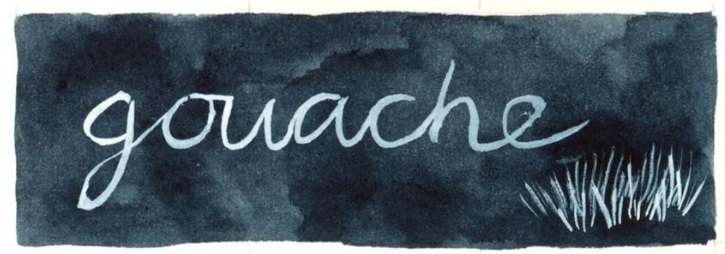Paint information
Below, you'll find the full list of the 18 watercolor paints I use on my palette. I recommend you start with the 10 in the 'Essential Range' as they give you the best options for mixing.
Unless stated otherwise, all paints are Winsor and Newton. You can find out more about why I recommend these as the best watercolor paints, as well as links to order them from online suppliers, on this page.
For each paint, you'll find the pigment number, which you can use to find an exact match. I also show the tonal range each paint can achieve, from darkest to palest. You can use this as a visual reference to find a near-match to any watercolor paints you might already have.
Essential Range paints
I recommend starting with a range of 10 colours, which I call the Essential Range and which will allow you to complete the beginner level tutorials in my online School. Most of these 10 colours can't be substituted by mixing from other paints on this list. However, as you'll see below, many paints in the Essential Range can be used to mix colours in the 8 Additional Paints list further down the page.
1) Winsor Lemon

- Pigment: PY175
- Possible to substitute with other Essential Range Paints? No
- Daniel Smith Alternative: Lemon Yellow
2) Payne's Gray

- Pigment: PB15+PBk6+PV19
- Possible to substitute with other Essential Range Paints? No
- Daniel Smith alternative: Payne’s Blue Gray (If you have the Daniel Smith Payne’s Gray you’ll need to add a touch of French Ultra Marine to match exactly if following a tutorial)
3) Burnt Sienna

- Pigment: PR101
- Possible to substitute with other Essential Range Paints? No
- Daniel Smith alternative: Quinacridone Burnt Orange
4) Winsor Green (Yellow Shade)

- Pigment: PG36
- Possible to substitute with other Essential Range Paints? No
- Daniel Smith alternative: Phthalo Green Yellow Shade
5) Permanent Sap Green

- Pigment: PG36+PY110
- Possible to substitute with other Essential Range Paints? No
- Daniel Smith alternative: Hooker's Green (It is more blue than WN permanent sap green so less will be required usually when mixing with Daniel Smith Sap Green)
6) Permanent Carmine

- Pigment:PV19 (this is also the same pigment in other paints like Permanent Rose so it's best to go with Permanent Alizarin Crimson if substituting as that's the best colour match)
- Possible to substitute with other Essential Range Paints? No
- Daniel Smith alternative: Carmine
7) Scarlet Lake

- Pigment: PR188
- Possible to substitute with other Essential Range Paints? No
- Daniel Smith alternative: Organic Vermilion
8) Opera Rose

- Pigment: PR122
- Possible to substitute with other Essential Range Paints? No
- Daniel Smith alternative: Opera Pink
9) Quinacridone Violet

- Pigment: PV55
- Notes: W & N offered this pigment as a ‘Limited Edition’ in 2016 then added it to the standard range in 2019. I used to use Bright Violet by Holbein as a dark purple in the older School tutorials - to match to that add a little Opera Rose to this paint.
- Possible to substitute with other Essential Range paints? Yes, Mix 70% French Ultramarine with 30% Opera Rose
- Daniel Smith alternative: Quinacridone Purple
10) French Ultramarine

- Pigment: PB29
- Possible to substitute with other Essential Range Paints? No
- Daniel Smith alternative: Ultramarine Blue
Additional paints
Once you have the essential paints, you can add the following 8 paints to your collection gradually so you have all the colours I have in my palette. Many of these can be substituted by mixing paints from the Essential Range, though mixing gets more complicated when you're mixing paints you've substituted.
11) Transparent Orange (by Schmincke)

- Pigment: PO71
- Possible to substitute? Yes, with 60% Winsor Lemon mixed with 40% Scarlet Lake
- Note: (This colour was previously called Translucent Orange so Anna refers to it as this in older School tutorials)
- Daniel Smith alternative: Permanent Orange (this is a lighter and more yellow colour, but can be darkened and made more red by adding some Organic Vermilion)
12) Permanent Rose

- Pigment: PV19
- Possible to substitute? No
- Daniel Smith alternative: Opera Pink
13) Gouache, Permanent White

- Pigment: PW4 or PW6
- Possible to substitute? No
- Note: Often named Titanium White, OR Chinese White OR you can use any White Gouache paint
- Daniel Smith alternative: Titanium White, OR Chinese White
14) Davy's Gray

- Pigment: PG17+PBk6+PBk19+PW5
- Possible to substitute? Yes, mix 40% Payne’s Gray and 60% Burnt Sienna but really watery to match Davy’s Gray
- Daniel Smith alternative: Use a mix of 80% Buff Titanium with 20% Payne’s Gray
15) Yellow Ochre

- Pigment: PY43
- Possible to substitute? Yes, mix 60% Burnt Sienna with 40% Winsor Lemon
- Daniel Smith alternative: Burgundy Yellow Ochre
16) Cobalt Blue

- Pigment: PB28
- Possible to substitute? Yes, Mix 80% French Ultramarine with 20% Cobalt Violet and use more dilute to match Cobalt Blue
- Daniel Smith alternative: Cobalt Blue
17) Winsor Blue (Green Shade)

- Pigment: PB15:3
- Possible to substitute? It’s not as bright but you can mix 70% French Ultramarine with 30% Winsor Green (Yellow Shade)
- Daniel Smith alternative: Phthalo Blue Green Shade
18) Cobalt Turquoise Light

- Pigment: PG50
- Possible to substitute? Yes, mix 50% Winsor Green Yellow Shade and 50% Winsor Blue Green Shade - with lots of water to lighten
- Daniel Smith alternative: Cobalt Teal Blue

